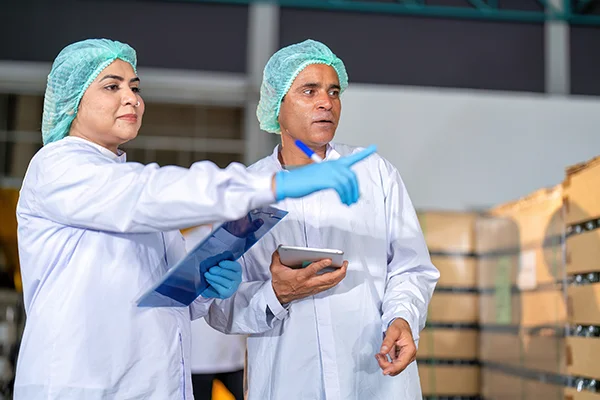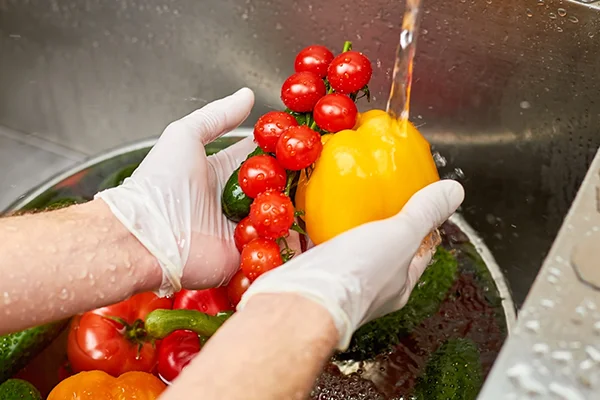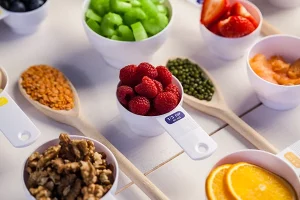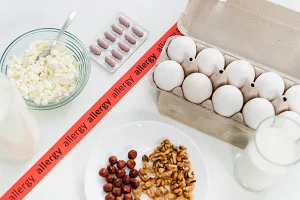Adhering to food safety standards is a critical aspect of successful food manufacturing. For instance, in 2023, the USDA’s Food Safety and Inspection Service conducted 7.7 million food safety and defence procedures across 6,900 establishments, highlighting the importance of rigorous oversight. By implementing best practices, manufacturers can ensure their products consistently meet regulatory requirements and quality expectations. Here’s a comprehensive guide and best practices for maintaining top-notch food safety standards in your facility.
What is the best way to prevent poor food safety?
Preventing poor food safety involves a comprehensive approach that includes proper handling, storage, preparation, and cooking. Here are some key strategies:
Employee Training and Hygiene
Effective training on hygiene practices is essential. Employees must learn proper handwashing techniques, the importance of wearing hairnets and gloves, and the need to avoid actions that could lead to food contamination, such as smoking or eating in production areas. For instance, a seafood processing facility could institute a comprehensive training regimen that includes simulated scenarios to reinforce proper handling techniques and emphasize the importance of maintaining cleanliness to prevent cross-contamination.
Read more: Food Safety Regulations: A Guide for Food Manufacturers

Sanitation and Cleaning Procedures
Improper cleaning and sanitization of food preparation, handling, and processing areas can turn them into significant contamination hazards. To prevent this, implement strict sanitation protocols for cleaning equipment, surfaces, and production areas. Use appropriate cleaning agents and ensure thorough rinsing to remove residues. Establish cleaning schedules and document cleaning activities. Regular and meticulous cleaning routines help prevent contaminants buildup ensuring a hygienic production environment.
For example, a dairy processing plant can schedule a daily cleaning of all machinery with a specialized food-grade sanitizer, followed by a thorough rinse. They can document each cleaning session in a logbook, noting the time, date, and any observations. This routine helps maintain cleanliness and allows for tracking and accountability.
Cross-Contamination Prevention
Cross-contamination occurs when harmful bacteria or allergens are transferred from one surface or food item to another, potentially resulting in foodborne illnesses or allergic reactions. Effective prevention measures include implementing strict cleaning and sanitation protocols, segregating raw and cooked foods, and properly storing ingredients. For example, in a poultry processing plant, preventing cross-contamination involves ensuring that raw chicken products are kept separate from cooked or ready-to-eat foods at all times. This includes using dedicated cutting boards, knives, and other equipment for raw poultry and thoroughly sanitizing surfaces between tasks. Employees must also practice proper handwashing and glove-changing procedures to prevent the transfer of bacteria from raw chicken to other food items.
Temperature Control
Effective temperature control is essential to prevent pathogen growth throughout the production process. This includes maintaining cold storage for perishable ingredients and finished products. Regularly calibrate thermometers and other temperature-monitoring devices to ensure accuracy. Keeping a consistent temperature log can help identify any deviations and prompt corrective actions. For instance, if you own a meat processing plant, you should implement a system where temperatures of refrigerated storage units are checked and logged every two hours. If a temperature deviation is noted, immediate steps can be taken to address the issue, such as adjusting the refrigeration settings or transferring products to another unit, ensuring that all products remain within safe temperature ranges.
Read more: 5 Tips for Effective Food Manufacturing
Supplier Verification and Quality Control
Verify the quality and safety of raw materials through audits, certifications, and testing. Establish specifications for incoming materials and conduct inspections upon receipt. Developing strong relationships with reliable suppliers and conducting regular reviews can help maintain high-quality standards for the raw materials used in production.

Hazard Analysis and Critical Control Points (HACCP)
HACCP is a management system that ensures food safety by analyzing and controlling biological, chemical, and physical hazards throughout the entire food production process, from raw material production and procurement to handling food boxes and packaging, manufacturing, distribution, and consumption of the final product. By implementing a HACCP plan you can identify, evaluate, and control potential hazards. This systematic approach helps prevent, eliminate, or reduce hazards to acceptable levels. Regular reviews and updates of the HACCP plan ensure it remains effective in addressing emerging risks and challenges.
Traceability and Recall Procedures
Establish systems to trace products throughout the supply chain, enabling quick identification and recall in case of contamination or safety issues. Maintain detailed records of all batches produced and their distribution channels. In the event of a recall, having an efficient traceability system in place can significantly reduce the impact and protect consumers.
For instance, in the latest outbreaks of avian influenza A(H5N1), with a reliable traceability system implemented, the government and the manufacturers can swiftly pinpoint all the retail stores, warehouses, and distribution centers where the contaminated poultry was delivered. This rapid identification allows for an immediate recall, preventing further distribution and consumption of the affected products and safeguarding public health from potential exposure to the harmful virus.
Read more: Understanding the Costs of a Food Recall: Prevention Strategies
Regular Inspections and Audits
Conduct regular internal and third-party inspections to ensure compliance with food safety standards and regulations. Address any identified issues promptly and document corrective actions. Routine audits help maintain transparency and accountability within the production process.
Additionally, third-party audits conducted by independent food safety experts or regulatory agencies, provide an additional layer of oversight and validation. These audits often involve comprehensive evaluations of the entire production process, from raw material sourcing to final product distribution, to ensure adherence to regulatory requirements and industry best practices
Allergen Management
Develop procedures to manage allergens effectively, including proper labelling, segregation, and cleaning protocols to prevent allergen cross-contact. Educating employees about the importance of allergen management and keeping detailed records of allergen control measures can prevent accidental cross-contact and protect consumers with allergies. With MenuSano, you can add allergen information for complete transparency and compliance, dietary labels for food, and possible cautionary messages, if needed.
Continuous Improvement and Training
The best way to prevent poor food safety is to foster a culture of continuous improvement by encouraging feedback from employees, conducting regular training sessions on food safety practices, and staying updated on industry trends and regulatory changes. Regular training helps reinforce the importance of food safety and keeps the workforce informed about new practices and technologies.
By implementing these best practices, food manufacturers can significantly reduce the risk of foodborne illnesses and maintain high food safety standards. Regular monitoring, documentation, and employee engagement are crucial to ensuring these practices are effective and consistently followed. Emphasizing a proactive approach to food safety not only protects consumers but also enhances the reputation and credibility of the food manufacturing facility.
Read more: Food Safety Regulations: A Guide for Food Manufacturers
MenuSano’s Solution
MenuSano has joined forces with Field Eagle to enable food service establishments to simplify the management of their food safety logs and procedures. Food safety inspections include meat and poultry products, pest control, HACCP, facility and equipment, and much more!
The frequency of inspections depends on the level of risk associated with each premises. High-risk premises undergo inspections at least three times yearly, moderate-risk premises are inspected at least twice annually, and low-risk premises receive at least one annual inspection.
Field Eagle’s cutting-edge solution facilitates the tedious process of managing handwritten forms and inspections to become obsolete.
MenuSano’s various services and easy-to-use software take the worry, cost, and confusion out of food safety and nutrition facts labelling, allowing businesses to concentrate on creating great food products. Start your free trial today or Schedule a Demo!



















